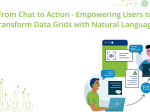12 Go-To Resources About The Best Javascript Framework
Selecting a JavaScript web application framework can either make or break you as a developer. A useful framework helps the developer finish the tasks faster, allows for simple coding, and allows the creation of scalable JavaScript web applications. On the other hand, a bad selection will result in endless delays and unnecessary problems to the project.
You will see the importance of framework selection and how you can improve your work by using Chrome Developer Tools. After that, you will see why Ext JS is better than every other grid and how the MVVM design pattern improves app maintenance.
You will see how to manage asynchronous JavaScript through the use of Promises, step-by-step creation of login forms, as well as the use of plugins and mixins. Finally we will cover responsive design, real-time chart building, and the use of GraphQL. These will make sure that you leave nothing out when starting your next web application development project.
Why Should You Care About Choosing the Right JavaScript Framework?
Your framework can improve speed and increase the growth of the web design application while improving the overall quality of the code. Better teamwork and less risk of future problems can be done if the right framework is chosen. The given options should be checked and thought about in order to improve the overall performance of the custom web application development process.
As a developer, the choice of the JavaScript web application framework to work with is very important. It decides how fast you work and how much effort is spent keeping the code. It decides software speed and growth, and it directly affects the end-user experience.
With the right framework, web application development is faster and there is less feature re-writing in the future. You also make teamwork smoother. On the other hand, a bad choice will slow you down, add bugs, and cause unnecessary future problems.
Take time to check and study frameworks. Check the performance, the documentation, the community around it, and growth. Think about the size of the project and your goals. The benefits of choosing right will be a smoother rapid web application development cycle with fewer issues, and your results will show this. You and your users will be much happier.
What Are The Hidden Gems In Chrome Developer Tools?
Chrome DevTools has many hidden tools that can improve work. The Audit Lighthouse tool can be used to improve code for performance and SEO while the Coverage tool can be used to find unused code. Local Overrides allows safe testing while the Performance panel helps in smarter debugging.
As you build complex, fast, and scalable JavaScript web applications, the Chrome Developer Tools remains one of the most powerful tools. It allows you to check elements, fix code, and check performance. However, there are many features that a lot of developers seem to miss.
Start with the Coverage tab. It removes unused CSS and JavaScript so you can clean your code and improve page loading speed. After that, do your Lighthouse audits. These audits check performance, SEO, accessibility, and other important factors.
Then, look at Local Overrides. These will allow you to make code changes without risking your live setup. Go to the Performance panel. It shows slow scripts and improves your code step by step to make smoother custom web application development.
These features show how often you use them. The more you practice will directly connect with the speed and improvement of your JavaScript web applications. Knowing even a little of these best kept secrets will give you a better chance on a progressive web application or a top JavaScript web application framework.
How Is Ext JS Better on Performance Than Other Data Grids?
It has smooth scrolling and instant filters when dealing with large data sets. Buffered rendering saves Ext JS from having to load all the data rows the user sees. This allows the web based application to be more efficient and reliable overall.
When you work with large data sets, performance is very important. Ext JS gives you the speed you need. With the grid component, the rows are rendered while users can scroll with no lag even when there are thousands of records.
It does buffered rendering only when the rows are visible. Not only does this save memory, it also increases speed. Users can filter, sort and group without the UI being locked.
Ext JS continues to be responsive and reliable and does complex operations with large datasets much better than other web application development frameworks.
The grids must be easy to use for the grids to perform well as enterprise-grade JavaScript web applications. Happy customers are created and complaints lessen when your grid is fast. They also save you many hours of boring performance tuning.
With some web and application development frameworks you can use real world data. With Ext JS you will get consistent and fast grids as your custom web application grows. This way you can concentrate on application features rather than performance tuning.
What Is the MVVM Pattern and Why Should You Use It in Ext JS?
Apps can be easily organized using MVVM. Each app is broken down into components which include the data, the user interface, and the logic. The overall web application development framework process is faster while more bugs are removed and testing becomes easier. The project is easier to scale as it grows.
As the Model-View-View-Model (MVVM) pattern is often seen as the most suitable approach for structuring web application architecture using JavaScript, each layer of data, user interface and business logic is clearly structured and separated in an Ext JS application.
Data is held and managed in the Model and data is shown to users in the View. The ViewModel is the syncing layer and maintains the interaction of both components in a two-part setup. The organization of the code into parts increases readability and easy maintenance.
There is a decrease in overall bugs and testing is made easier. A useful feature of using MVVM is the ability to reuse components, thus speeding up the time to develop a custom web application. Another advantage MVVM brings is the ease of workflow when working with multiple developers, as each member can focus on clearly outlined components of the application.
If you build large or enterprise-grade apps, you can use the MVVM pattern to help your scaling efforts. MVVM can be added into the project almost throughout the entire developing period. It is a time saving and useful feature, while keeping the application organized and reliable while reducing the need for rework.
How to Handle Asynchronous JavaScript With Promises?
To keep an application active and responsive, Promises should be used. With the syntax .then(), the application goes to the success case, while in the case of failure, the code closure is followed by .catch(). The code is more organized when written using async/await syntax.
Asynchronous JavaScript is easier to work with when using promises. JavaScript is a single threaded language, so tasks are carried out in a single line. You cannot leave the rest of the program waiting while waiting on an API to respond. This is what the promises feature is for.
A Promise is something that is worth something in the future. A Promise can be handled for success with the .then() method. A Promise can also be handled for failure with .catch() which makes the code easier to understand for debugging purposes.
Take the code further with more advanced features using async/await. This syntax improves understanding by removing callback problems and having the code read like it is in order. Promises should be used often because they improve the responsiveness of web based applications built with the fastest web application framework.
How Do Sencha Applications Utilize the Functionality of Mixins and Plugins?
Plugins are quick ways to add features and mixins allow you to share logic between many components. Using both together keeps your code easier to manage and improves performance.
Mixins and Plugins are two features that allow you to quickly add functions to your Sencha Ext JS web application java framework. With just a few lines of code you can add a plugin to a component to improve its use which then allows you to add features such as drag and drop, tooltips, custom checks, and more.
Mixins are a different case. They allow for the reusable logic to be shared and organized across multiple classes which reduces repetition.
Mixins should be used to add logic which needs to be applied across multiple components. Plugins are best for adding features that improve single components. The combination of both allows you to have flexibility in your project and keep it clean, resulting in faster web application development while also improving performance.
First you can create a form panel that contains fields such as password and email. Then add in your form some checks and specify where error messages will appear. Then you can reset your form and safely send your data with a single API call.
In Just 3 Steps, How Can You Construct A Login And Registration Form Using Ext JS?
First you can create a form panel that contains fields such as password and email. Then add in your form some checks and specify where error messages will appear. Then you can reset your form and safely send your data with a single API call.
The registration and the login page are usually the first pages that a user will see and so, these pages need to be kept properly safe so that unwanted users don’t get access to the web based application. For better user experience, the registration and login process also should be easy to use and reliable, all while being fast and scalable. To create these pages quickly and within a few minutes, using the advanced best backend JavaScript framework, Ext JS, will be very helpful. This quick use of Ext JS will save time greatly, while also fixing any possible weak points present in the custom web application.
Step 1: Create The Form Panel
Start by using Ext.form.Panel. Add fields like email, password, or date of birth.
Ext.create('Ext.form.Panel', {
items: [
{ xtype: 'textfield', name: 'email', fieldLabel: 'Email', allowBlank: false },
{ xtype: 'textfield', name: 'password', fieldLabel: 'Password', inputType: 'password', allowBlank: false }
]
});Step 2: Add Validation And Error Messages
The system should also have inline error messages so that users can correct themselves easily. Validation should, however, be turned on, and msgTarget: ‘side’ should be set.
Step 3: Manage Submit And Reset
Use the form.submit() to send data and the form.reset() to reset.
The custom web application development projects developed by teams like EY and Coworkee are well protected and use Ext JS in web and application development. Check out the KitchenSink example and see how fast you can create forms that are ready for production.
What Are the Steps Required to Construct Responsive Applications Using Ext JS?
Set your layouts to change to any screen size. Use the responsive plugin for changing views in real time. Provide smooth switch between the desktop and mobile devices, as well as on tablets.
A progressive web application design is a must. It is expected that a user should be able to smoothly use a device of their choice, be it a desktop, tablet, or mobile device. If the user is able to access the applications, but their experience is ruined with unresponsive page breaks, it can lead to user frustration which is not good.
Ext JS makes responsiveness simple. Just add the responsive plugin and set configurations to change the layouts dynamically:
responsiveConfig: {
'width < 600': { layout: 'vbox' },
'width >= 600': { layout: 'hbox' }
}This snippet changes the layout based on the screen’s width. This way you maintain uniformity and user experience across multiple devices with a native feel.
Companies such as Coworkee rely on Ext JS to develop dashboards available on all devices. Take a look at KitchenSink and see responsive components in action.
Why do Enterprises Consider Ext JS Better than Angular?
Provide your team with everything in one best web application framework. Ext JS includes more than 140 UI components, data management and ready-to-use grids. So, you can build faster and scale with confidence.
Enterprises have more needs than a favorite front-end framework. They need a strong solution with support for maintenance and upgrades. They need something that can handle heavy use as well as changes in the future. Angular is good, but often needs a group of add-ons as well as extra setups.
With Ext JS, you have everything that you need in one place. You have over 140 UI components, advanced data management, and built-in tools for charts, forms, and grids.
Ext.create('Ext.grid.Panel', {
store: myStore,
columns: [{ text: 'Name', dataIndex: 'name', filter: 'string' }],
plugins: 'gridfilters'
});This grid can be used for production right away. Companies like EY and IBM are able to meet the demand for secure, scalable, and strong JavaScript web applications in a short time. Use KitchenSink to explore and try it yourself.
What are the Top Practices to Avoid When it comes to Ext JS Development?
Some of practices to avoid when it comes to EXT JS development are:
- Don’t use inline styles, and avoid hardcoded data. Use ViewModels for a clean structure. Write responsive mobile apps, and grids that are set up for best performance.
- Inline styles should be avoided. Use CSS classes to make maintenance easy.
-
Do not hardcode data.
// Bad store.loadData([{ name: 'John' }]); // Good store.load(); - Stop skipping ViewModels. Use data binding for cleaner structure.
- Stop too much DOM manipulation. Use Ext JS components instead.
- Do not repeat logic across components. Refactor into reusable classes.
- Avoid blocking UI threads. Use asynchronous operations instead.
- Do not ignore responsive settings. Make applications mobile-friendly.
- Do not use bad naming. Code should be easy to read.
- Debug code should not be left in production.
- Unused, unoptimized stores and grids have buffering that can be turned on for large data sets.
- Using GraphQL with Ext JS helps simplify data management. Request only the data that’s needed with GraphQL. This reduces network requests and makes applications faster. Use it with Ext JS for very responsive interfaces.
- Managing data in large JavaScript web applications is not easy. REST APIs can either send too little and leave out important content, or send too much and overload with extra content. Balancing these APIs can often slow your app down. GraphQL solves this problem. It lets you ask for a specific set of data and get it with little network load.
- Integrating GraphQL with Ext JS can do wonders for you. You can get data for grids, charts, and forms with exact control. Your UI will stay responsive. This is a mix trusted by enterprise teams like EY and IBM. Faster and smooth custom web application development is also possible.
Using JavaScript, How Can You Create Real-Time Updated Stock Market Charts?
Use the Ext JS charts for real-time access to live data through APIs. Data binding refreshes the charts right away. Create strong dashboards of real-time data that keep users interested and informed.
Investors need instant data. Slow dashboards will only lead to missed opportunities. A better choice you should aim for is a solution that runs by itself and under heavy load.
This is where Ext JS can help. Its charting components can be easily linked to live APIs like Marketstack. The data binding feature makes sure that your charts update the moment new information comes in.
The users get a smooth and polished experience using the dashboards you create with Ext JS, and it’s the popularity and speed of the fastest web application framework that keeps many teams building trading platforms with Ext JS. Check the KitchenSink charts demo and create dashboards that boost user engagement in real time.
What Are the Later Stages of Mastering the Best Framework for Web Application Development?
Practice with small simple projects to gain confidence and skill. Work on the KitchenSink demos and other documentation. Increase your confidence and skill step by step with production applications.
As with everything else in business, the framework that you pick is only the start. You need to get to work and build real projects. Progress without practice is slow and hard. Aim to build momentum and gain confidence, even if you start with simple choices.
You can see and use grids, charts, and forms when you explore the KitchenSink demo. Follow related documentation on the topic and complete the guides. It will be less stressful when you make fewer mistakes.
Companies like EY and IBM start their developers with demos, and then move to systems like production apps. From the start of your free trial you can start using Ext JS to build enterprise-grade web based applications.
Conclusion
The toughest decision is which framework to use for a JavaScript web application. Help its development. Keep its code clean. Give confidence while scaling. However, almost every JavaScript web application framework comes with a downside. Slow speed. Bugs. Simple features. Repeated work.
One such example is the set of twelve resources which helps in answering framework comparisons. Look for Dev Tools in Chrome. Look for MVVM, Promises, plugins, and mixins. Learn how real-time charts are improved and how to add responsive designs.
Don’t wait and start exploring demos of the KitchenSink. With the use of Ext JS, make custom web apps that have much better speed, coding output, and enterprise quality. Users will feel the difference.
Start building faster, scalable JavaScript web applications with Ext JS – explore KitchenSink today!
FAQs
How Many Frameworks Are There in JavaScript?
There are many frameworks: React, Angular, Vue, Svelte, Ext JS, to name a few.
What Are the Most Popular JavaScript Frameworks?
The most popular for web and application development are React, Angular, Vue.js, Next.js and Ext JS.
What Are Progressive Web Applications (PWAs)?
A progressive web application is a web application that works offline, loads fast, and acts like a native app.
Can You Use Multiple JavaScript Frameworks Together?
Yes, you can, but it will make the project much harder, and increase the cost of ongoing maintenance.
How Do You Make a Web Application?
Decide features and functions, pick a design framework, create the user interface, connect the APIs, and publish the web application on the internet.
What Are Single Page Web Applications (SPAs)?
Single Page Applications only load once and change and update content without doing a full page refresh.
Is There a Need to Learn JavaScript Before Learning Frameworks?
Yes, strong basic knowledge of JavaScript makes learning any web application development framework easier and improves productivity.
What Is the Most Popular Web Server Application?
Nginx and Apache are the most popular server software used on the internet today.
What Is an Application and Software?
A software product is a set of connected applications, and an application is a software made to help the user do specific tasks.
What Is an Application Program?
An application program does specific functions for the user, such as managing emails, customer relations, and spreadsheets.

Building software for regulated industries demands more than functional code. Healthcare organizations must protect patient…

The Ext JS Data Grid is widely regarded as one of the most feature‑rich and…

The integration of LLMs into Web application development has moved well beyond simple content generation…









